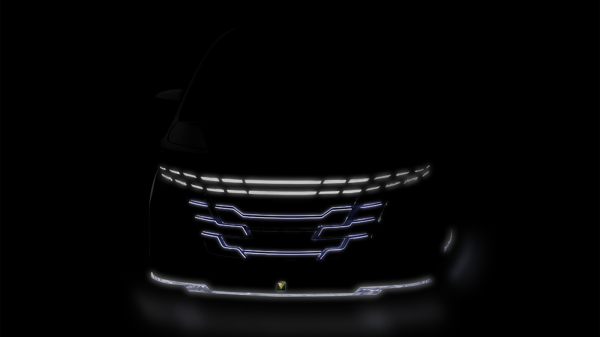
French professional diver Henri Cosquer, discoverer of the underwater Cosquer cave in 1985 in the Calanques of Marseille
Credit: GERARD JULIEN /AFP
When French diver Henri Cosquer stumbled upon the world’s only prehistoric cave paintings reached from under the sea in 1991 off Marseille, some Parisian experts laughed off his claims of caveman penguin art as Provence hyperbole.
Those claims turned out to be entirely true and saw the Cosquer Cave — whose entrance lies 37 metres (120ft) under the waves — hailed France’s “undersea Lascaux”.
Now Mr Cosquer, in his 70s, is about to have the last laugh as an exact copy of the fabulous discovery that bears his name will soon open to the public in Marseille.
Experts around France are putting the finishing touches to a perfect facsimile of the Cosquer Cave — the only one in the world with an entrance below present-day sea level where cave art has been preserved from the flooding that occurred when the seas rose after the end of the last Ice Age.
The original contains a bestiary of 500 drawings of 11 different species, including horses, bison, aurochs, ibex, chamois, saiga antelope, red and megaloceros deer and a cave lion.
However, unique to the cave are sea animals including penguins, auks, seals and jellyfish-like creatures. The cave also contains a depiction of what some have dubbed the first prehistoric murder, showing a human with a seal’s head shot through by a spear.

The cave has dozens of black and red hand stencils
Credit: Henri Cosquer /Gamma-Rapho
There are also depictions of sexual organs, dozens of black and red hand stencils along, strange geometric signs, and even children’s handprints eight feet from the ground, suggesting they were sitting on adults’ shoulders.
With experts unable to verify Mr Cosquer’s spectacular claims first-hand at the time, some dismissed them as fantasy. No Palaeolithic art had ever been discovered in this area.
Denis Vialou, deputy director of Paris’ natural history museum said he was “intimately convinced that it is a fake” while science writer Isabelle Bourdial mocked the improbable presence of the “Provençal penguin”.
In a rare interview, Mr Cosquer — who resembles a gruff Gallic rugby forward — told the Telegraph their scepticism still riled him 30 years on.
"Paris and Marseille have never got on. They think they’re the kings of the world and the rest of us good-for-nothings. But I wouldn’t vouch for these know-it-alls. How many have learned to dive to see the cave for themselves?,” he asked.
Enough to confirm he was telling the truth. Indeed, carbon dating has shown they were painted in two distinct periods — around 30,000 years ago and 19,000 years ago.
Dubbed by the French press an underwater Indian Jones, Mr Cosquer first found the cave entrance in 1985 after plunging from his boat — incredibly called Cro Magnon — to explore the depths off the rocky calanque de la Triperie near Cassis.

Henri Cosquer first found the cave entrance in 1985
Credit: Gamma-Rapho /Fanny BROADCAST
It required nerves of steel to swim up through a narrow, pitch-black gallery for about 360 feet, which miraculously led to a huge chamber partially above sea-level.
Shining his torch into the cave, he was dazzled by stalagmites and stalactites and a “gigantic kaleidoscope” of colours but noticed no hand of man. “It wasn’t like arriving in a supermarket with bright lights on,” he said.
Only several dives later did he notice a red hand on a wall created by a prehistoric artist spitting pigment onto the cave to form a silhouette.
“At first, I thought: ‘Who’s come down here to put graffiti on the walls?’,” he said. “I only later realised it was prehistoric graffiti.”
Mr Cosquer finally revealed his secret find in 1991 shortly after three divers perished when they panicked in the gallery’s murky silt.
When last frequented almost 20,000 years ago, the grotte was 5km from the shore. Since then the sea level has risen 130 metres. Today only a third of the cave is above sea level and the water is inexorably rising due to climate change.
Hence the decision to build a copy of the original, due to open in summer 2022 in Marseille’s Villa Méditerranée, a futuristic building partially next to its acclaimed Mucem museum.
Visitors will enter the replica cave in “exploration pods” that give the illusion of surfacing from below the waterline.
They will then behold a replica lovingly recreated built by artisans who worked on similar copies of Lascaux in the Dordogne and Chauvet in the Ardèche.

Henri Cosquer finally revealed his secret find in 1991
Credit: Henri Cosquer /Gamma-Rapho
Working from 3D digital scanning of the actual cave, every detail is recreated using concrete, resin, but also marble powder and crushed glass to ape glittering mineral deposits.
Then comes the painting. In a warehouse outside Toulouse, Gilles Tosello, an artist and prehistorian, gave the Telegraph an exclusive look at several panels where the cave art is recreated by using images of the paintings projected onto the walls.
Penguins, horses and a big cat all look as if they have been spirited from the original walls, drawn using some of the same tools as their prehistoric forebears, including charcoal from Scots pine twigs and natural pigment like Cassel earth.
Mr Tosello said his work was more than mere replication. “This is not about just copying penguins. It’s is not decoration. The aim is to make visitors feel the same emotion as if they were entering the real cave.”
He expressed deep respect for cave artists. “It is hard to match the beauty and assurance of their curved lines on rock,” he said, adding that there was a “common thread” from “Caravaggio all the way back to Cosquer”.
“If they saw our panels I’d like them to think: ‘They’re mad, they’ve cut up our cave.”
As for Mr Cosquer, he said it was vital the copy was exhibited in Marseille.
"It was very probably a Marseillais who painted this, a grandfather or grandmother 33,000 years ago. That’s why I’m supporting this replica so that the layman can really see what I have seen with my own eyes.”






















































Свежие комментарии